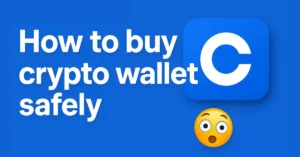Blockchain in supply chain finance
Introduction
In today’s fast-moving world, businesses rely on smooth and efficient supply chains to keep products moving and customers happy. However, managing the financial side of a supply chain — known as supply chain finance — can be challenging. Payment delays, lack of trust between parties, and complicated paperwork are common problems many companies face.
This is where blockchain technology is starting to make a big difference.
Created for digital currencies like Bitcoin, blockchain is now being used in many industries, including supply chain finance. It helps make processes faster, more transparent, and more secure. In this blog post, we’ll explain what blockchain is, how it works in supply chain finance, and why more businesses are starting to use it. Whether you’re new to the topic or just want a simple explanation, this guide will help you understand how blockchain is changing the future of supply chains.
Understanding Blockchain Basics
Before we dive into how blockchain helps supply chain finance, let’s first understand what blockchain is.
Blockchain is a special type of database or digital record system. But unlike traditional databases that are controlled by one company or authority, blockchain is decentralized, which means it is shared across a network of computers. Everyone on the network has access to the same information.
Here’s how it works in simple terms:
- Information (like a transaction) is stored in small groups called blocks.
- Each block is connected to the previous one, forming a chain.
- Once data is added, it cannot be changed or deleted.
- Every participant in the network can see the data, but no one can secretly change it.
Key Features of Blockchain:
- Transparency: Everyone involved can view the same data at the same time.
- Security: Data is protected through strong encryption and can’t be tampered with.
- Immutability: Once something is recorded, it stays there permanently.
- Decentralization: No central authority controls the data — it’s shared and trusted by all.
In short, blockchain creates a safe and reliable environment where all parties can track and verify transactions without needing a middleman. This is especially useful in supply chain finance, where multiple businesses need to trust each other and share accurate information.
Role of Blockchain in Supply Chain Finance

Supply chain finance involves multiple parties — suppliers, buyers, banks, logistics companies, and others — all working together to manage payments, goods, and services. But these processes can be slow, unclear, and full of paperwork. This is where blockchain can play a powerful role.
Here’s how blockchain improves supply chain finance:
Real-Time Tracking of Transactions
With blockchain, every step in the supply chain — from order placement to payment — can be recorded and tracked in real time. Everyone involved can see the status of shipments, invoices, and payments instantly. This helps reduce delays and confusion.
Increased Trust Between Parties
Since data on the blockchain is transparent and cannot be changed, it builds trust among all participants. For example, a supplier doesn’t have to worry about whether the buyer will pay on time — the terms are recorded and visible to both sides.
Smart Contracts
Blockchain supports smart contracts, which are self-executing digital agreements. Once certain conditions are met (like delivery confirmed), the payment is automatically released. This reduces manual work and speeds up the process.
Improved Cash Flow Management
Because transactions are recorded instantly and payments can be automated, companies can better manage their working capital. This is especially helpful for small suppliers who often face delays in getting paid.
Fraud Reduction and Security
Blockchain makes it much harder to commit fraud because all records are permanent and verified by multiple users. This protects businesses from fake invoices, duplicate payments, or false delivery claims.
In short, blockchain brings clarity, speed, and trust to supply chain finance. It allows businesses to work more efficiently, reduce costs, and build stronger relationships with their partners.
Benefits of Using Blockchain in Supply Chain Finance
Blockchain technology brings several powerful benefits to supply chain finance. It solves many of the common problems businesses face, such as delays, lack of trust, and paperwork overload. Let’s look at the key advantages:
Better Transparency and Traceability
Every transaction, from product orders to payments, is recorded on a shared digital ledger. This means all parties — suppliers, buyers, and financiers — can see the same data in real time. There’s no confusion about what happened or who did what. It also helps track the origin and journey of goods, which is important for quality and safety.
Faster and Automatic Payments
Blockchain allows payments to happen much faster, especially when combined with smart contracts. These contracts automatically release funds when agreed-upon conditions are met, like when a shipment is delivered. This reduces waiting time and speeds up the entire payment process.
Reduced Risk of Fraud and Errors
Since blockchain records are secure and cannot be changed, it’s nearly impossible to tamper with them. This helps prevent issues like fake invoices, double payments, and other types of fraud. It also cuts down on human errors from manual data entry.
Lower Operational Costs
With blockchain, there’s less need for paperwork, third-party verification, or manual checks. This saves both time and money. Businesses can streamline operations and reduce the number of intermediaries involved in financial processes.
Easier Financing for Small Businesses
Small and medium-sized enterprises (SMEs) often struggle to get financing because they lack financial history or collateral. Blockchain creates a transparent record of their transactions and performance, making it easier for them to prove creditworthiness and access loans.
Improved Supply Chain Relationships
When all parties have access to the same trusted data, it reduces misunderstandings and builds stronger relationships. Everyone knows what to expect, and problems can be solved faster.
In short, blockchain makes supply chain finance faster, safer, and more efficient, benefiting everyone involved, from small suppliers to global corporations.
Real-World Use Cases and Examples
Blockchain is no longer just a concept — many companies around the world are already using it to improve supply chain finance. These real-world examples show how blockchain is solving real problems and bringing real value to businesses.
IBM and Maersk – TradeLens Platform
IBM partnered with global shipping giant Maersk to create TradeLens, a blockchain-based platform for managing global trade. It tracks shipments in real time, securely shares documents, and improves transparency across the supply chain.
Impact: Reduced paperwork, faster customs clearance, and improved trust among shipping partners.
We. Trade – European Trade Finance Platform
We. Trade is a blockchain-based trade finance platform developed by several major European banks. It allows companies to manage purchase orders, invoices, and payments digitally. Smart contracts are used to automate transactions between buyers and sellers.
Impact: Increased efficiency, faster payments, and easier access to finance for small businesses.
Provenance – Ethical Supply Chain Tracking
UK-based startup Provenance uses blockchain to track the origin and journey of products, especially in the food and fashion industries. It helps companies prove that their products are ethically and sustainably sourced.
Impact: Greater transparency, stronger brand trust, and responsible supply chains.
De Beers – Tracking Diamonds with Blockchain
Diamond company De Beers uses blockchain to trace each diamond from the mine to the retail store. This ensures that the diamonds are conflict-free and genuine.
Impact: Trust for buyers, reduced risk of fraud, and improved product authenticity.
HSBC – Blockchain for Letter of Credit
HSBC completed a blockchain-based trade finance transaction using a digital letter of credit between companies in two different countries.
Impact: Transaction time reduced from 5–10 days to just 24 hours, proving blockchain’s potential to speed up global trade finance.
These examples show how blockchain is not just an idea — it’s actively changing how businesses manage supply chains and finance operations. Companies using blockchain are seeing faster payments, better transparency, and lower costs.
Challenges and Limitations
While blockchain brings many benefits to supply chain finance, it’s important to understand that the technology also faces some challenges. Adopting blockchain is not always easy, especially for businesses that are still using traditional systems. Here are some of the main limitations:
Integration with Existing Systems
Many companies already use different software and tools for finance and supply chain management. Connecting these old systems with blockchain platforms can be complex, time-consuming, and costly. It often requires a complete change in how the business works.
Lack of Standardization
There is no universal standard for blockchain use in supply chains. Different platforms may not work well together, making it hard for all partners in the supply chain to join the same system. Without common rules, full cooperation becomes difficult.
Regulatory and Legal Concerns
In many countries, laws about blockchain, digital contracts, and cross-border data sharing are still unclear. Businesses may worry about legal issues, especially when handling financial transactions or sensitive information through blockchain.
Scalability Issues
As more data is added to a blockchain, the system can slow down. Large supply chains with many transactions may face performance issues, especially if the blockchain network isn’t built for high volume. This can affect speed and efficiency.
High Initial Costs
Setting up a blockchain solution often requires investment in technology, training, and system upgrades. While it can save money in the long run, smaller businesses may find the upfront cost too high.
Limited Understanding and Skills
Blockchain is still a new technology for many people. There is a shortage of professionals who fully understand how to design, build, and manage blockchain-based systems. This knowledge gap can slow down adoption.
In short, while blockchain has the potential to transform supply chain finance, it’s not a one-size-fits-all solution. Businesses need to carefully plan, invest, and train their teams to make the most of this technology.
Future Outlook

The use of blockchain in supply chain finance is still growing, but its future looks very promising. As more companies explore digital transformation, blockchain is expected to play an even bigger role in improving how businesses manage payments, trust, and supply chain operations.
Here’s what we can expect in the coming years:
Wider Adoption Across Industries
Large companies are already using blockchain, and smaller businesses are beginning to follow. As the technology becomes easier to use and more affordable, more supply chains — from food to fashion — are likely to adopt blockchain solutions.
Improved Integration with New Technologies
Blockchain won’t work alone. It will be combined with other technologies like:
- AI (Artificial Intelligence) – to predict demand and detect fraud.
- IoT (Internet of Things) – to track goods in real time using smart sensors.
- Big Data – to analyze trends and make better financial decisions.
Together, these technologies can make supply chains smarter, faster, and more secure.
Stronger Focus on Sustainability
Consumers and investors are becoming more concerned about sustainability and ethical sourcing. Blockchain can help companies prove where their products come from and how they were made, creating transparent and responsible supply chains.
Government and Regulatory Support
As blockchain proves its value, more governments and financial institutions are likely to create clear rules and standards to support its use. This will make it easier and safer for businesses to adopt the technology.
Better Access for Small Businesses
In the future, even small suppliers and startups will be able to join blockchain-based platforms. This will help them get paid faster, access financing, and compete with larger players in the market.
What This Means for Businesses
Companies that invest early in blockchain will have a competitive advantage. They’ll be able to offer faster services, build more trust with partners, and run more efficient supply chains.
In short, blockchain is not just a trend — it’s a long-term shift that’s changing how supply chains and finance work together. The future looks bright for businesses that are ready to embrace it.
Frequently Asked Questions (FAQs)
What is blockchain in simple words?
Blockchain is a type of digital record-keeping system. It stores information in a secure and transparent way so that no one can change it once it’s recorded. Everyone involved can see the same data.
How does blockchain help in supply chain finance?
Blockchain makes it easier for businesses to track orders, share documents, and manage payments. It reduces delays, builds trust between companies, and helps automate payment processes using smart contracts.
What is a smart contract?
A smart contract is a digital agreement stored on the blockchain. It runs automatically when certain conditions are met. For example, when goods are delivered, the payment can be released automatically without needing manual approval.
Is blockchain only for big companies?
No, small and medium-sized businesses can also use blockchain. In fact, it can help them get paid faster and access finance more easily by showing a clear history of their transactions.
Is blockchain safe to use for financial transactions?
Yes, blockchain is very secure. Once data is added, it can’t be changed or deleted. Every transaction is encrypted and verified by the network, which reduces the risk of fraud and errors.
Can blockchain work with other technologies?
Yes, blockchain can be combined with tools like AI, IoT (Internet of Things), and cloud computing to make supply chains even smarter and more efficient.
What are the challenges of using blockchain?
Some common challenges include high setup costs, lack of skilled professionals, and the difficulty of connecting blockchain with older business systems. Also, not all countries have clear rules about using blockchain yet.
Is blockchain the future of supply chain finance?
Many experts believe so. Blockchain has the power to improve speed, transparency, and trust in supply chains. As more businesses adopt it, blockchain is expected to become a key part of how supply chains and finance work together.
Conclusion
Blockchain is changing the way businesses manage supply chain finance. It brings more transparency, faster payments, and stronger trust between companies. While there are some challenges, the benefits are clear, especially as more industries go digital. As the technology grows, blockchain is set to play a big role in making global supply chains smarter, faster, and more reliable.
Bonus Points
Blockchain can reduce supply chain disputes.
- Since all transactions are recorded and time-stamped, there’s clear proof of what happened and when, which helps avoid misunderstandings or legal conflicts.
Helps in verifying product authenticity.
- Blockchain can track the entire journey of a product from the manufacturer to the customer, helping to fight against counterfeits and fake goods.
Useful in global trade.
- Blockchain works well across borders, making it easier for international partners to work together without delays caused by time zones, currency differences, or paperwork.
Builds customer trust.
- When companies use blockchain to show where their products come from and how they’re handled, customers feel more confident in what they’re buying.
Supports ESG goals (Environmental, Social, and Governance).
- Blockchain helps businesses prove their commitment to ethical sourcing, fair labor, and sustainability — w,c h is becoming more important to investors and customers.
Also read
- What is a Crypto Wallet and How Does It Work? – Coinsify
- 10 Crypto Terms Every Beginner Must Know – Coinsify
- What is Blockchain Technology – Complete Guide – Coinsify
- How to Buy Crypto Safely in 2025 – Complete Guide – Coinsify
- Bitcoin vs Ethereum: Key Differences Explained – Complete Guide
- Ultimate Blockchain Glossary: Learn Blockchain Terms Easily
- How to Buy Bitcoin Safely (Complete Beginner’s Guide)
- Top 10 Crypto Wallets for Beginners (2025 Edition)
- What is Cryptocurrency? A Beginner-Friendly Guide (2025)






